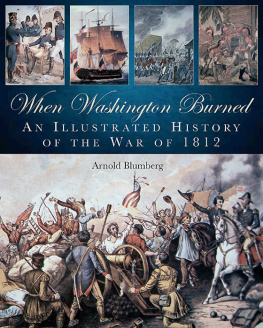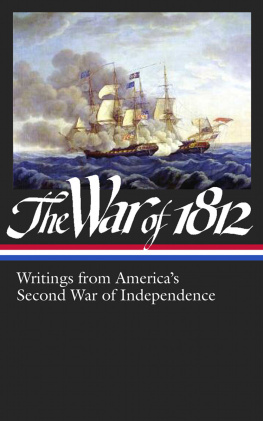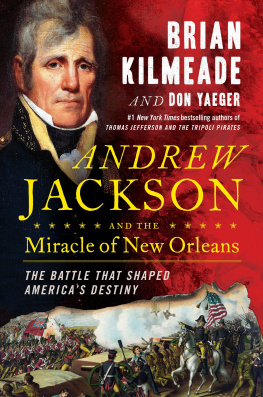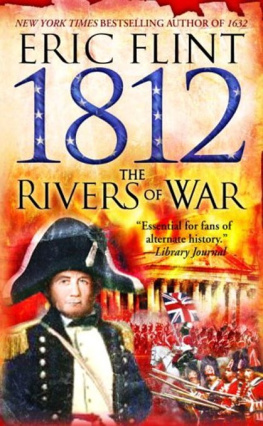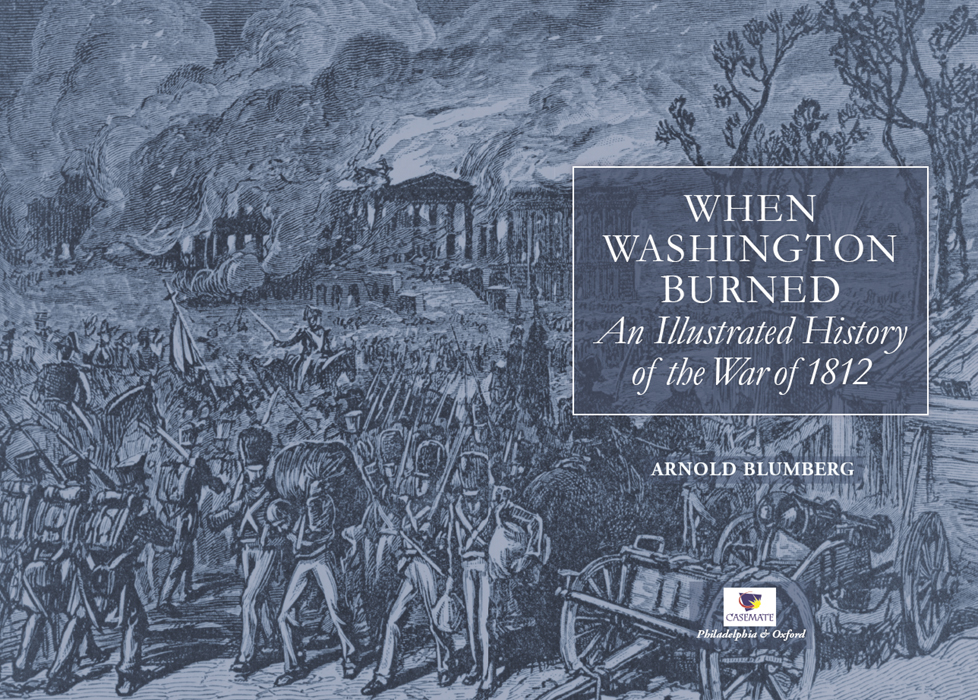
Published in the United States of America and Great Britain in 2012 by
CASEMATE PUBLISHERS
908 Darby Road, Havertown, PA 19083
and
10 Hythe Bridge Street, Oxford, OX1 2EW
Copyright 2012 Casemate Publishers
ISBN 978-1-61200-101-2
Digital Edition: ISBN 978-1-61200-113-5
Cataloging-in-publication data is available from the Library of Congress and the British Library.
All rights reserved. No part of this book may be reproduced or transmitted in any form or by any means, electronic or mechanical including photocopying, recording or by any information storage and retrieval system, without permission from the Publisher in writing.
10 9 8 7 6 5 4 3 2 1
Printed and bound in the United States of America.
For a complete list of Casemate titles please contact:
CASEMATE PUBLISHERS (US)
Telephone (610) 853-9131, Fax (610) 853-9146
E-mail:
CASEMATE PUBLISHERS (UK)
Telephone (01865) 241249, Fax (01865) 794449
E-mail:
Image, title page: Capture and Burning of Washington by the British in 1814.
Courtesy of the Library of Congress
Unless otherwise noted, all images courtesy of Peter Newark's Pictures.
Contents
Dedication
To my wife Marsha, who has happily supported my interest in the study of military history these many years, I lovingly dedicate this book.
Acknowledgments

I WOULD LIKE TO THANK THE PEOPLE WHOSE AID AND SUPPORT MADE THIS BOOK possible. First, I wish to thank Tim Newark, author, historian, and editor. His expert and insightful advice about what ingredients make for an interesting and informative historical narrative guided my writing.
To Sandra Jackson, Supervisor of the Interlibrary Loan Department, the Milton S. Eisenhower Library, and John Hopkins University in Baltimore, Maryland, I want to thank for her courtesy, kindness, and timely responses to my requests for material. Her able assistants, Jeanette Brown and Jeff Dysart, not only made me feel at home but also took an interest in my project, which greatly encouraged my effort.
To Casemate Publishers, I would like to extend my gratitude for their confidence in me to put a manuscript together, and their desire to add to the material on the War of 1812 in its 200th anniversary year. The fine illustrations they have included in the work add greatly to the volume.
To my daughters, Beth and Maureen, whose encouragement helped me carry on, thank you for taking the time and interest in your old Dad's avocation. To my wife Marsha, thanks for the occasional needed push to get the job done.
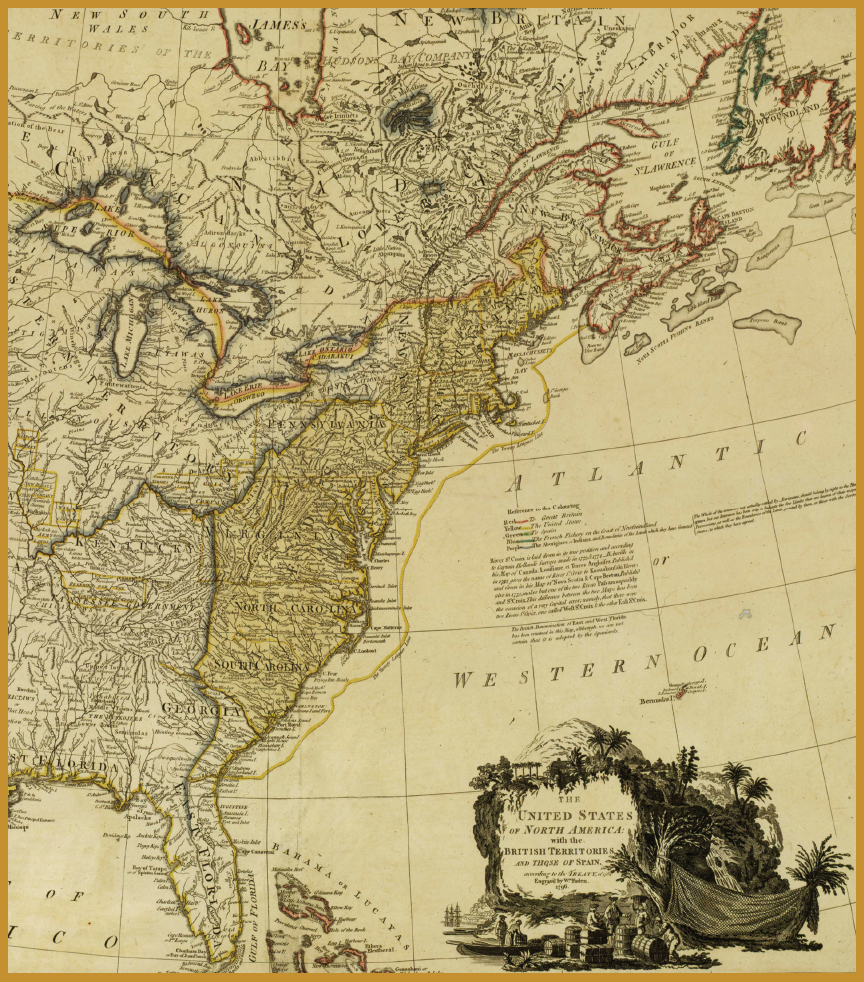
Introduction

IT HAS BEEN CALLED THE FORGOTTEN CONFLICT, THE UNNECESSARY WAR, AND the obscure war, all appropriate appellations for the early 19th century military strugglethe War of 1812fought between the British Empire and the United States of America. Initiated by unclear causes, and ending with equally murky consequences, it is a stretch to claim it was a US victory, or a great British triumph. Concluded in 1815 with an agreement acknowledging the pre-war status quo, modern historians of both countries continue to question why it was even fought in the first instance.
Marked by domestic opposition, from the Federalists in the United States and much of the merchant class in England, and relegated by the British to the status of a mere colonial disruption due to her ongoing war with Napoleonic France, the American War was perceived by the world as a sorry little side show. And yet, despite this criticism, the conflict did produce genuine martial heroes: Andrew Jackson, Jacob Brown, and Winfield Scott for the Americans, and Isaac Brock and Gordon Drummond for the British, not to forget the honorable Shawnee Indian Tecumseh. While the standing of the British Army was not diminished by the struggle, that of the American Army rose, from amateurs in arms to a potentially respectable fighting force led by promising officers. The United States Navy came away from the combat with a brilliant record written by its frigates. Indeed, it was from this increasing military prowess on land and at sea that the United States was able to secure its status as a formidable power in the years after 1815, and expand its international influence and prosperity both at home and abroad. For the British, although they gained no new territory, they were able to keep Canada, which was their primary objective during the war.
It is not the purpose of this book to describe all the myriad military events that took place during the War of 1812. Instead, this book highlights the major campaigns and battles and points out the key military figures that contributed to the outcome of the war. As such, I have not mentioned certain episodes such as the Patriot War in East Florida, or the activities in the West after 1813, since they did not involve significant American or British forces; nor are the many small-scale raids and retaliatory actions that took place in all theaters included. The same can be said for the American and British general officers mentioned in the book. From the incompetent to the very capable, they all deserve to be more fully described, since they were genuine products of their time and reflected how 19th century warfare was waged. Hopefully, in its 200th anniversary year, the reader will find interest in the military events and the soldiers who took part in them, and agree that the War of 1812, fought by American, British, and Indian fighting men should not be considered a forgotten war.
CHAPTER ONE
The Road to War

PREPARE FOR WAR WAS THE CLARION CALL OF THE FEDERALIST PARTY. NEITHER the Federalists nor the Republicans differed over the wider objectives of American national policy during the late 18th and early 19th centuries. Both political parties agreed that the highest national objectives should be economic prosperity at home while protecting the nation's rights and maintaining its neutrality abroad. What divided these political factions was the best way to achieve those ends during the series of conflicts that marked the period from 1793 to 1815.
War is a great calamity, said Federalist Connecticut US Congressman Benjamin Tallmadge, and the surest way to avoid it, is to be prepared for it. As a result, the Federalists put in place a program of financial and military preparedness in the 1790s. Closely aligned with fiscal reforms, the Federalists expanded the nation's armed forces. The standing peacetime army was increased from 840 officers and enlisted men in 1789, to 5,400 personnel by 1801. The latter year saw the navy, which had been completely dismantled at the conclusion of the American War of Independence, provided with 13 frigates in service as well as six ships-of-the-line under various stages of construction. Rounding out their defense measures, the Federalists allotted over $1 million for the protection of port cities from attack from the sea.
Next page
